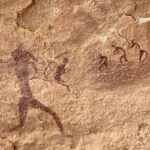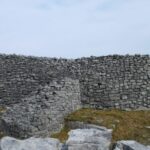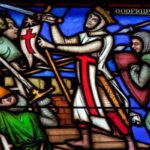We explain what the Bronze Age was, its stages, economy and other characteristics. Also, its beginning and end.
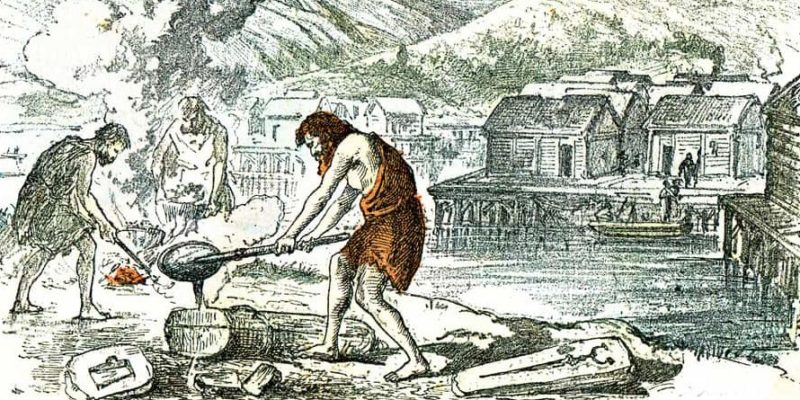
What was the Bronze Age?
The Bronze Age was the period of prehistory and human history that followed the Copper Age or Chalcolithic and that preceded the Iron Age. Together with these two ages it formed what is called the Age of Metals, in which human beings learned to manipulate various metals to make instruments that allowed them to improve their quality of life.
It was a fundamental period in human history. As its name indicates, It was characterized by the discovery of the technique to obtain bronze, an alloy of copper and tin.
The Bronze Age does not have a definitive and homogeneous start and end date, but rather approximate dates that correspond to the different regions of the world in which it occurred. For example, in 3800 BC. C. the first objects were made on the Iranian plateau with a type of bronze called arsenical, but Tin bronze working began around 3000 BC. C. in the Near East around 2500 BC. C. in Europe and in 2000 BC. C. in central and southern Asia. Bronze began to be used in China in 1800 BC. C., with the beginning of the Shang dynasty.
Although the Bronze Age is usually considered the period after the Copper Age, Some scholars consider the Copper Age to be the initial phase of the Bronze Age and not as a different stage. For this reason, the end of the Neolithic and the beginning of the Age of Metals are sometimes marked with the Bronze Age.
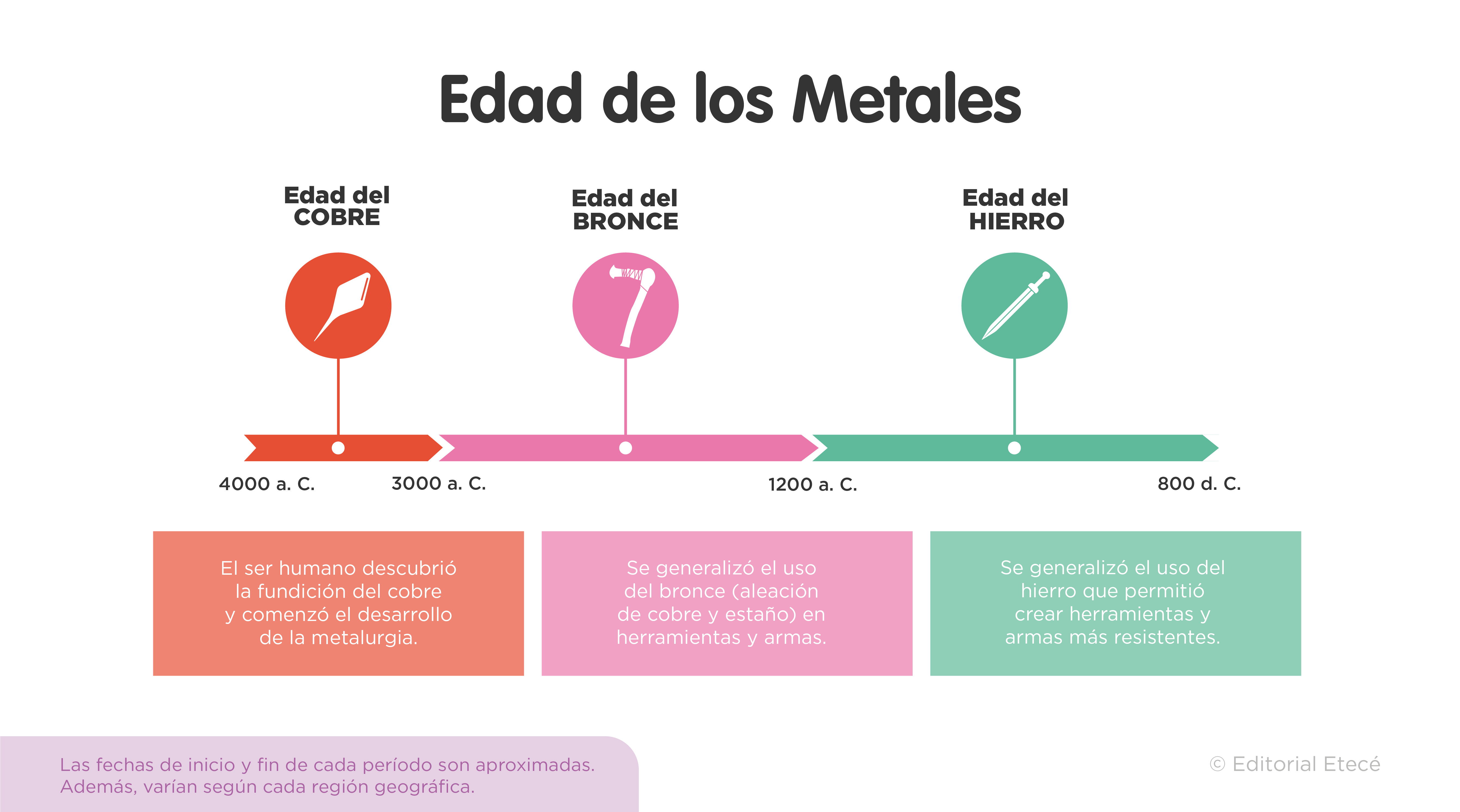
Key points
- The Bronze Age was a period in which bronze metallurgy was developed to make weapons, tools and everyday objects.
- It began approximately 3000 BC. C. in the Near East and a few centuries later in Europe, other parts of Asia and Egypt.
- It was a time of splendor of urban civilizations, with complex political and religious structures, extensive trade routes and important artistic creations.
- It ended around 1200 BC. C. when a crisis caused by migration occurred and the Iron Age began.
Beginning of the Bronze Age
The first records of the use of bronze occurred in prehistory on the Iranian plateau, around 3800 BC. C., although it was arsenical bronze (that is, an alloy of copper with arsenic). Bronze obtained from the alloy of copper and tin was introduced in Mesopotamia around 3000 BC. c There it played an important role in the making of weapons and utensils throughout the history of Sumeria, the Akkadian Empire, Babylon and Assyria.
The use and treatment of bronze It then spread to some of the great states of antiquity such as Egyptian (where it was known since the Early Dynastic period but only began to become widespread between the Old Kingdom and the Middle Kingdom, and never completely replaced stone) and Ancient China (where it formed an important part of the culture local during the Shang dynasty). In other civilizations, such as the Indus Valley and other Asian peoples, bronze metallurgy began around 2000 BC. c.
For its part, In Europe the use of bronze arrived around 2500 BC. C., probably through the Aegean Sea in three periods corresponding to three regions: the Cycladic (in the Cyclades islands), the Helladic (in mainland Greece) and the Minoan (in Crete).
Instead, In pre-Hispanic America there was no tin bronze metallurgy although there is evidence that some Andean societies used a series of alloys of copper with arsenic and nickel, and that the Inca Empire worked some type of bronze.
Characteristics of the Bronze Age
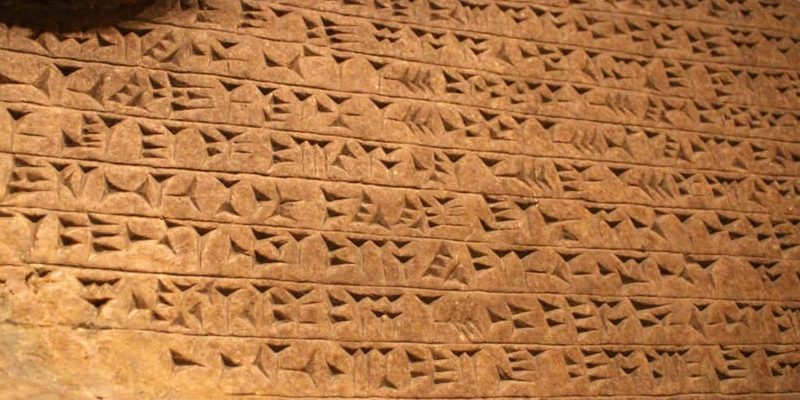
Although bronze metallurgy is what gives its name to this period, this was just one more innovation within an important set of historical changes.
Some of the important features of the Bronze Age were:
- A substantial development in art especially in reliefs and sculpture, such as statues in polished rock and bronze. In this period, the megalithic monuments of the so-called Cyclopean architecture were made in Europe and some of the great monumental structures of the Near East were built, such as the Mesopotamian temples.
- An intensification of trade especially with the mining regions due to the need for copper and tin to produce bronze, which in turn promoted important dynamics of cultural exchange.
- The expansion of urban life and the deepening of social stratification through the consolidation of authority figures (such as kings or bosses) and labor specialization.
- The development of the first forms of writing some of them invented at the end of the Copper Age, such as cuneiform in Mesopotamia, inscribed on clay tablets, and hieroglyphic in Egypt.
- An improvement of military equipment which became more effective due to the use of bronze in weapons, armor and shields, and gave a technological advantage to armies that possessed this metal.
Stages of the Bronze Age
The Bronze Age is usually subdivided into three stages:
- Antique or Early Bronze. Temporarily located between 3000 and 2000 BC. C. in the Near East (dates vary in other regions), was characterized by the appearance of the first bronze weapons and tools, which coexisted with those of copper and stone, and depended on the availability of tin.
- Medium or Full Bronze. Temporarily located between the years 2000 and 1600 BC. C., marked the expansion and predominance of the use of bronze, both for weapons and tools and for utensils and ornaments, so that the metal was already part of daily life.
- Final or Late Bronze. Temporarily located between the years 1600 and 1200 BC. C., witnessed contact between great civilizations that established diplomatic relations, started wars and also interacted with smaller populations, some without development of writing. It was also the time of the beginning of funeral cremation in Europe and the construction of large cemeteries with urns, often known as urn field culture. At the end of this period, there was the fall of some great empires and civilizations of the eastern Mediterranean, due among other reasons to the migrations and invasions of the so-called Sea Peoples, and iron metallurgy spread, which began the Age of the Sea. Iron.
Bronze Age Economy

The Bronze Age was characterized by a notable increase in production and wealth of societies, as well as commercial exchange. However, most of this wealth was concentrated by the elites, in temples and palaces. Furthermore, there was important war events and conquests in which those towns that had bronze weapons had an important advantage.
During this stage, in addition, the improvement of writing (which emerged in Mesopotamia and Egypt at the end of the Copper Age) and the appearance of mathematics favored state activities such as bureaucratic administration and monumental architecture, and promoted economic and commercial development.
However, the Bronze Age It also witnessed the appearance of new towns and great migrations which significantly altered the cultural, political and commercial landscape of Europe and the Middle East, especially in the eastern Mediterranean region. These population movements contributed to the crisis of the Late Bronze Age that produced the fall of civilizations and empires.
End of the Bronze Age
The Bronze Age It culminated in the midst of a crisis, usually known as the “12th century crisis.” because it happened around 1200 BC. C. Although there are several reasons for this crisis, one of them was the migrations and invasions of populations throughout the eastern Mediterranean, such as the arrival of the “Sea People” mentioned in Egyptian documents of the time.
These Population movements contributed to the collapse of the Hittite Empire and the Mycenaean civilization and caused changes in the area of Syria and Palestine with the installation of Philistine, Aramean and other peoples. Furthermore, the Mesopotamian States experienced internal crises, while the Pharaonic State managed to militarily defeat the Sea Peoples and stop their advance.
With the crisis of the Bronze Age around 1200 BC. C. the Iron Age began which was characterized by the replacement of bronze by iron as the predominant metal for making tools and weapons, and by the invention of more sophisticated forms of metallurgy.
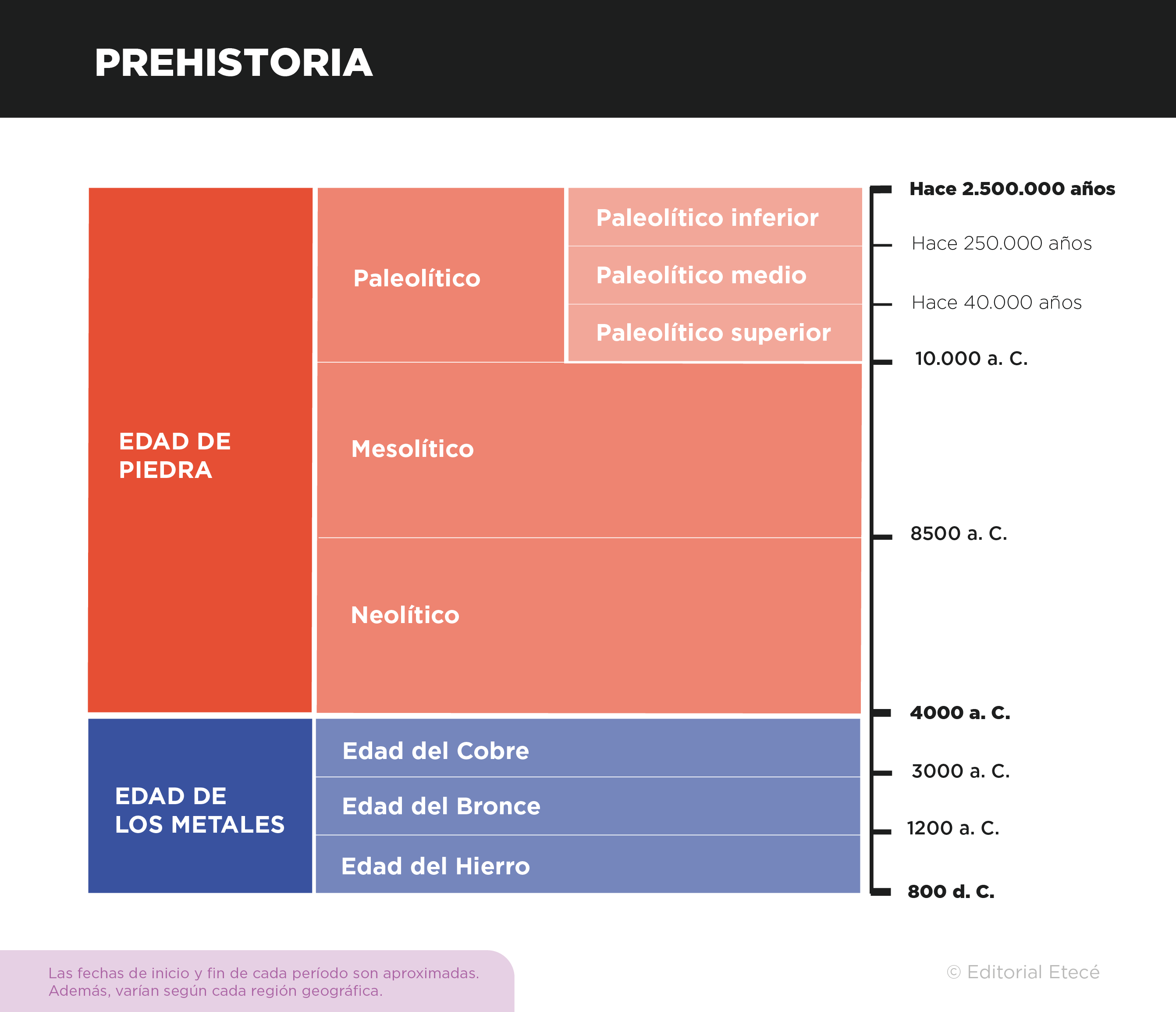
References
- Britannica, Encyclopaedia (2023). Bronze Age. Encyclopedia Britannica. https://www.britannica.com/
- Cline, E. H. (2015). 1177 BC C. The year civilization collapsed. Criticism.
- Hunt, L. et al. (2016). The Making of the West. Peoples and Cultures. 5th edition. Bedford/St. Martin's.
- Liverani, M. (1995). The Ancient East. History, society and economy. Criticism.
- Macquire, K. (2021). Bronze Age Aegean. World History Encyclopedia. https://www.worldhistory.org/


